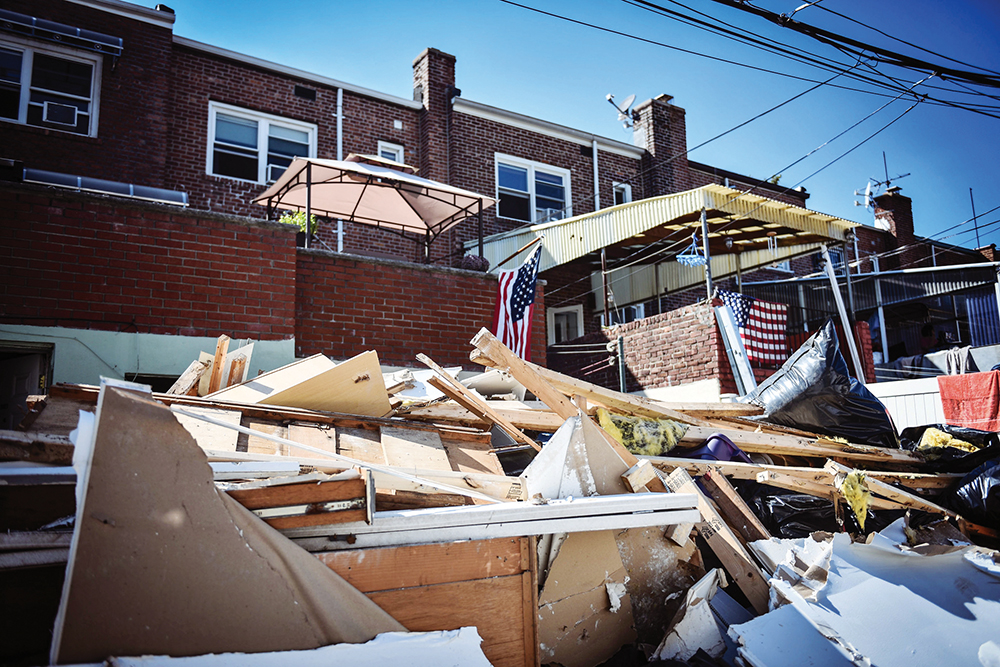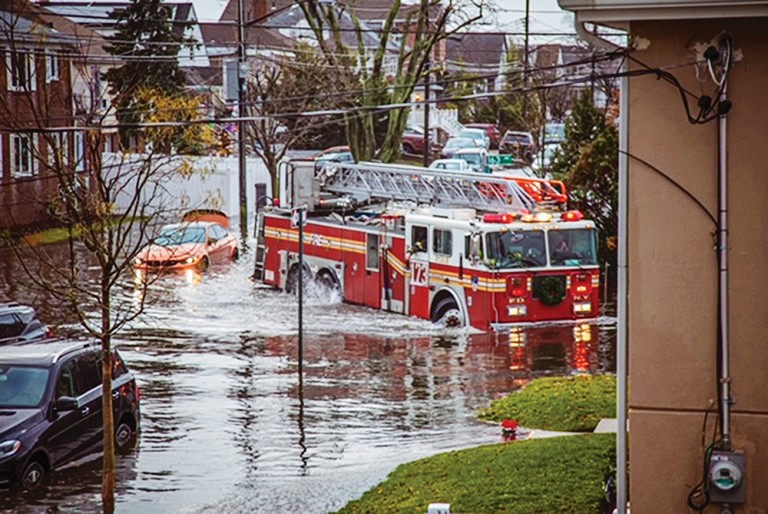By Michael V. Cusenza
Queens Borough President Donovan Richards Jr. on Monday announced the release of his Operation Urban Sustainability working group’s third annual borough resiliency report. The 39-page document outlines the ongoing work of making Queens a cleaner, greener borough—all in the face of recently defunded flood-mitigation projects.
Highlights of the annual OUS report include studies around air pollution, flooding hotspots and water quality across the borough. It also highlights ongoing efforts to make Queens more accessible for pedestrians and cyclists, to expand Queens’ inventory of open spaces, to build more hydroponic labs in schools and to make the borough a global leader in clean energy production through transformational projects like the Champlain Hudson Power Express and the Renewable Ravenswood plan.

File Photo
BP Richards wrote that “developing better ways to communicate with communities in Jamaica Bay about the risks they face from flooding is crucial.”
The release of the report coincided with Monday morning’s press conference hosted by Richards in East Elmhurst, featuring area elected officials, environmental justice advocates and neighborhood residents.
Held in the shared driveway off Astoria Boulevard between 87th and 88th Streets — the site of former President Joe Biden’s 2021 visit to Queens in the wake of the devastation brought by Hurricane Ida — the press conference saw the Borough President and others demand an immediate reversal of the Trump administration’s recent move to cancel nearly $150 million in federal funding for a trio of cloudburst flood mitigation projects in East Elmhurst ($50 million), Corona ($47 million) and Flushing ($46.6 million).
Last month, the Federal Emergency Management Agency announced it was terminating its Building Resilient Infrastructure and Communities program — launched in 2020 during President Trump’s first term — claiming it was “wasteful,” “ineffective” and “politicized.” Nearly $900 million in funding for projects nationwide will be returned to the Treasury, including more than $300 million slated for initiatives in New York City.
Collectively, the three endangered Queens projects include the installation of sustainable infrastructure, new drainage systems, rain gardens and more. These efforts would minimize flooding from severe storms by enhancing our infrastructure’s ability to absorb significant amounts of rain.
Hurricane Ida’s flood waters killed 11 people across the borough — mostly residents who drowned in their basement apartments — and seriously damaged hundreds of homes. In total, the storm was responsible for over $7.5 billion in property damage across New York State.

File Photo
Hurricane Ida’s flood waters killed 11 people across the borough — mostly residents who drowned in their basement apartments — and seriously damaged hundreds of homes.
OUS partner New York Lawyers for The Public Interest compiled data that highlights the current flooding reality:
Queens residents are at higher than average risk for flooding at all levels of storm intensity.
Queens residents made over 4,000 backup complaints involving private sewer systems to the NYC Department of Environmental Protection in 2022 alone — nearly six times as many as Manhattan.
“There are no rights more fundamental to the health of our families than the rights to clean air and clean water. But millions of residents across New York City, especially here in Queens, continue to bear the burden of pollution and other environmentally destructive crises,” the report reads. “At a crucial moment in history, Queens Borough President Donovan Richards and his Operation Urban Sustainability working group continue to counteract this inaction, harm and discrimination by continuing to make progress on the local level.”
Addressing the importance of Jamaica Bay, Richards wrote that “developing better ways to communicate with communities in Jamaica Bay about the risks they face from flooding is crucial. It helps to increase awareness about the potential dangers associated with flooding, which can be life-threatening. It can help individuals and communities to better understand their vulnerabilities and develop strategies to mitigate these risks.
“In addition to developing better ways to communicate with communities in Jamaica Bay about the risks they face from flooding,” Richards continued, “working with NYC Emergency Management and developing toolkits for organizing in response to disasters can further enhance preparedness efforts. By partnering with emergency management agencies, communities can access valuable resources and expertise to help them plan and respond to disasters effectively. Developing toolkits can also provide a practical guide for residents to organize themselves and their neighborhoods in the event of an emergency. This can include identifying vulnerable populations, establishing communication protocols, and setting up neighborhood response teams. Overall, these collaborative efforts can help to ensure that communities are better prepared to deal with the impacts of flooding and other disasters.”
In the report’s executive summary, Richards wrote, “Much of the sustainability updates, data, strategies and proposals in this 2025 Progress Report are meant to frame the national climate crisis in local terms, while exploring the borough’s relationship to its waterways, sewer infrastructure and transportation. Together, we can and will demonstrate how Queens leads the world by example in its commitment to environmental justice.”

